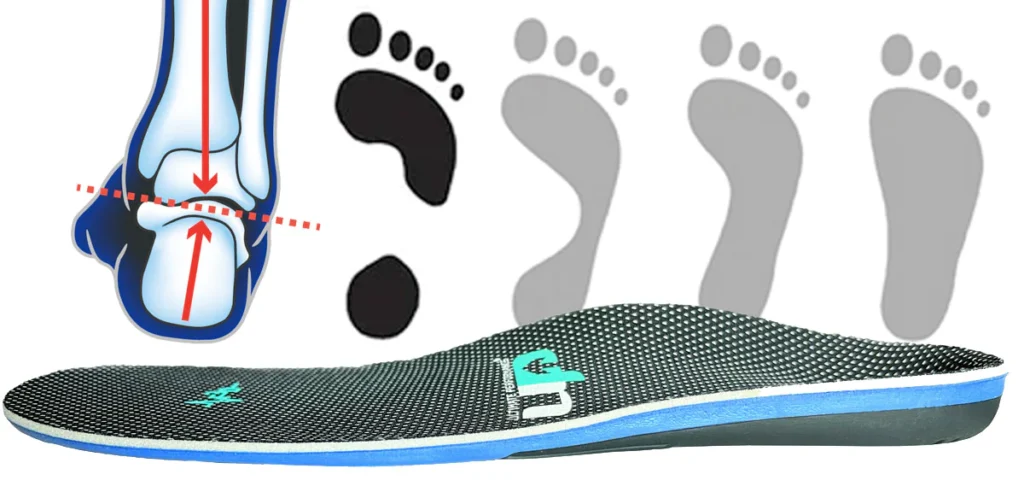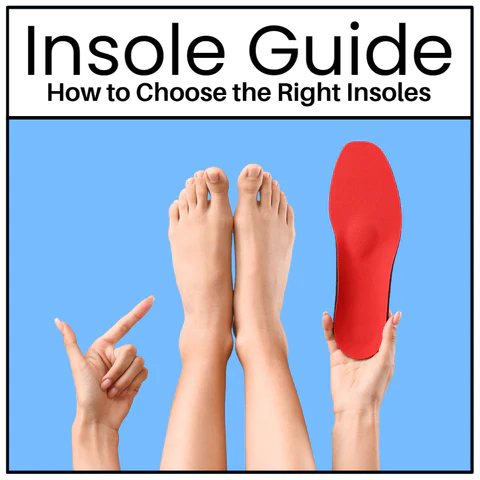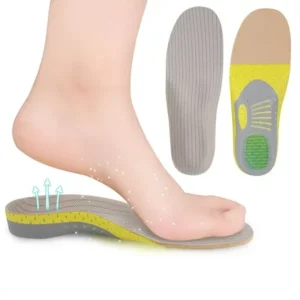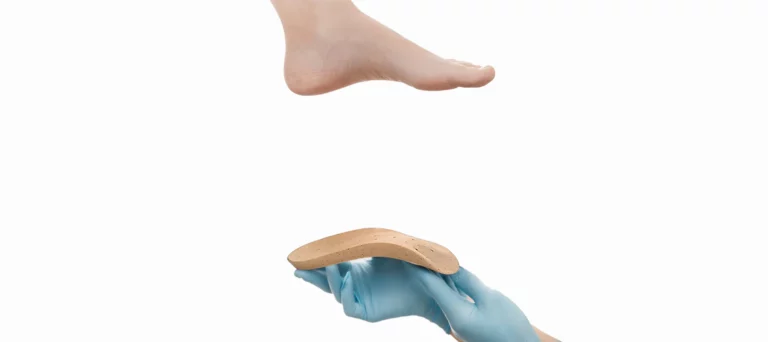In the realm of fashion, shoes have always been a statement piece. They not only complement our outfits but also play a significant role in ensuring our comfort and overall well-being. One crucial aspect of shoe design is arch support, and it varies greatly across different shoe styles. This article delves into the world of arch support, exploring how it differs from heels to flats.
Introduction
In the realm of fashion, shoes have always been a statement piece. They not only complement our outfits but also play a significant role in ensuring our comfort and overall well-being. One crucial aspect of shoe design is arch support, and it varies greatly across different shoe styles. This article delves into the world of arch support, exploring how it differs from heels to flats.
Understanding Arch Support
To truly appreciate the importance of arch support in footwear, it’s essential to understand the intricate mechanics at play. Your foot’s arch is a marvel of natural engineering, consisting of three primary arches: the medial longitudinal arch (along the inner edge of your foot), the lateral longitudinal arch (along the outer edge), and the transverse arch (running across the midfoot). These arches work together as shock absorbers, distributing your body weight evenly with every step.
However, not all arches are created equal. Some individuals have higher arches, while others have lower ones. The level of arch support required depends on your unique arch type and the shape of your feet. Neglecting proper arch support can lead to a host of issues, including arch strain, plantar fasciitis, shin splints, and even knee and back pain.
To maintain optimal foot health, it’s crucial to choose footwear that caters to your specific arch needs. Arch support in shoes helps maintain the natural curvature of your arches, preventing them from collapsing under the pressure of your body weight. This support not only enhances comfort but also reduces the risk of long-term foot problems.
So, as we delve into the world of shoes and their varying levels of arch support, remember that the health and comfort of your feet depend on the choices you make. Understanding arch support is the first step towards making informed decisions when it comes to your footwear.
The High Heel Dilemma
High heels, with their allure and elegance, have long been a fashion staple. However, beneath the glamour lies a significant dilemma when it comes to arch support and overall foot health.
The Impact on Arch Health

Wearing high heels can have a profound impact on the well-being of your arches. The defining feature of high heels is the elevated heel, which shifts your body weight forward, placing excessive pressure on the balls of your feet and, in particular, your arches. This unnatural positioning can lead to various issues, including:
- Arch Strain: The constant stress on your arches can cause them to become fatigued, leading to discomfort and pain.
- Plantar Fasciitis: High heels can exacerbate this common condition, characterized by inflammation of the tissue connecting your heel bone to your toes.
- Metatarsalgia: The increased pressure on the front part of your foot can result in metatarsalgia, causing pain and inflammation in the ball of your foot.
Moreover, frequent and prolonged use of high heels can lead to a shortening of the Achilles tendon, making it uncomfortable to wear flat shoes.
Strategies for Better Arch Support in Heels
While high heels may not be synonymous with arch support, there are strategies to mitigate their adverse effects:
- Choose Well-Designed Heels: Look for high heels that incorporate arch support into their design. Some brands now offer options with cushioned insoles and arch contours.
- Custom Orthotic Insoles: Consider investing in custom orthotic insoles specifically designed for high heels. These inserts can provide much-needed cushioning and support, reducing the strain on your arches.
- Limit Wear Time: Reserve high heels for special occasions and try to balance their use with more supportive footwear on regular days.
Understanding the high heel dilemma is crucial to making informed choices about when and how to wear them while minimizing the impact on your arch health.
The Comfort of Flats
In contrast to high heels, flats have earned a reputation for their comfort and versatility. These low-profile shoes are favored for their ability to provide a more balanced and natural platform for your feet.
The Benefits of Flat Shoes for Arch Support
Flat shoes, as the name suggests, lack the elevated heel commonly found in high heels. This absence of a heel contributes to a more even distribution of your body weight across your entire foot, including your arches. As a result, flat shoes offer several benefits when it comes to arch support:
- Even Weight Distribution: The level profile of flat shoes helps evenly distribute the force of your body weight, reducing the strain on your arches.
- Reduced Arch Fatigue: With less pressure on your arches, you’re less likely to experience discomfort or fatigue, even during extended periods of wear.
- Improved Posture: Flats encourage a more natural alignment of your body, promoting better posture and reducing the risk of musculoskeletal issues.
However, it’s essential to note that not all flat shoes are created equal in terms of arch support. While many flat shoes provide a comfortable and supportive experience, some may lack the necessary cushioning and contours for optimal arch health. To ensure the highest level of comfort and support, look for flats that feature:
- Cushioned Insoles: Adequate padding in the insoles provides an extra layer of comfort and support.
- Arch Contours: Some flats are designed with arch contours that match the natural shape of your feet, offering enhanced support.
By carefully selecting flat shoes that prioritize arch support, you can enjoy both comfort and style without compromising your foot health. Understanding the comfort they provide allows you to make informed choices about the best footwear for your daily activities and occasions.
Finding the Right Arch Support
When it comes to ensuring the health and comfort of your feet, finding the right arch support is paramount. While some shoe styles naturally provide better support than others, there are additional measures you can take to optimize arch support, regardless of your footwear choice.
Custom Orthotics and Insoles
One of the most effective ways to enhance arch support is by using custom orthotic insoles. These insoles are specifically designed to cater to the unique shape and arch requirements of your feet. Here’s why custom orthotics are a game-changer:
- Personalized Fit: Custom orthotics are molded to match your feet precisely, ensuring the most comfortable and supportive fit.
- Targeted Support: These insoles can provide targeted support to areas of your arch that need it most, reducing strain and discomfort.
- Improved Shock Absorption: Custom orthotics often include cushioning materials that enhance shock absorption, reducing the impact on your arches during activities like walking and running.
To get custom orthotics, consult with a podiatrist or foot specialist who can assess your foot structure and recommend the best orthotic solution for your needs. They will take impressions of your feet to create insoles that offer the optimal level of arch support.
In addition to custom orthotics, you can also find over-the-counter orthotic insoles that provide decent arch support. While these may not be as tailored as custom options, they can still offer significant benefits, especially when inserted into shoes that lack adequate support.
By investing in proper arch support, whether through custom orthotics or quality insoles, you can significantly improve the comfort and health of your feet, regardless of your choice of footwear.
Sneakers and Athletic Shoes
For those who lead an active lifestyle or engage in sports and exercise, the choice of footwear extends beyond fashion and comfort—it directly impacts performance and foot health. Sneakers and athletic shoes are designed with specific athletic activities in mind, and they play a crucial role in providing the necessary support, stability, and protection for your feet.
Why Arch Support Matters in Sports
Engaging in sports and physical activities places unique demands on your feet. The dynamic movements, impact forces, and varying terrains can put stress on your arches and other foot structures. This is where the importance of arch support in athletic shoes becomes evident:
- Stability: Athletic shoes often incorporate features like reinforced arches and midfoot support to help stabilize your feet during lateral movements and sudden changes in direction.
- Shock Absorption: High-impact sports can subject your feet to considerable shock. Arch support in athletic shoes helps absorb and distribute this shock, reducing the risk of injuries.
- Optimal Performance: Proper arch support can enhance your performance by providing a solid foundation and preventing arch fatigue during long workouts or sports activities.
- Injury Prevention: Well-designed athletic shoes with arch support can reduce the risk of common sports-related injuries, such as sprained ankles, plantar fasciitis, and shin splints.

When selecting athletic shoes, it’s essential to consider the specific requirements of your chosen activity. Different sports and exercises demand different types of arch support and cushioning. For example:
- Running Shoes: Running shoes are designed to provide forward motion and cushioning for repetitive impacts. Look for shoes that offer ample arch support tailored to your foot’s natural gait.
- Basketball Shoes: Basketball involves quick lateral movements and jumping. Opt for basketball shoes with strong arch support and ankle stability features.
- Cross-Training Shoes: These versatile shoes are designed for a variety of exercises and sports. Seek options with moderate arch support that can accommodate a range of activities.
- Tennis Shoes: Tennis shoes should provide lateral support for side-to-side movements and sufficient arch support to handle the impact of quick starts and stops.
Remember that the right athletic shoe can not only enhance your performance but also protect your arches and overall foot health during sports and exercise. Consult with a knowledgeable salesperson or sports podiatrist to find the perfect pair that meets your specific needs.
Sandals: A Summer Favorite
When the warm, sunny days of summer arrive, it’s time to shed those closed-toe shoes and embrace the freedom and breathability of sandals. Sandals are a quintessential choice for the season, offering comfort and style while allowing your feet to stay cool. However, finding the perfect balance between fashion and arch support is key when selecting your summer favorites.
Balancing Style and Support
Sandals come in an array of styles, from flip-flops and slides to strappy gladiators and comfortable sport sandals. While it’s tempting to prioritize aesthetics, it’s equally important to consider the level of arch support they provide:
- Flat vs. Contoured Footbeds: Some sandals feature flat footbeds with minimal arch support, while others come with contoured footbeds designed to mimic the natural shape of your arches. Opting for sandals with contoured footbeds can significantly enhance your comfort and support.
- Cushioning: Look for sandals with cushioned insoles or midsoles, as they provide added comfort and reduce the pressure on your arches during prolonged wear.
- Adjustable Straps: Sandals with adjustable straps or buckles allow you to customize the fit, ensuring your arches receive the support they need while accommodating your foot’s unique shape.
- Materials: Consider the materials used in the sole of the sandals. Some materials are more supportive and shock-absorbing than others, which can affect your arch health and overall comfort.
Additionally, keep in mind the type of activities you’ll be engaging in while wearing sandals. For casual strolls and leisurely outings, a stylish pair with moderate arch support may suffice. However, if you plan on walking long distances or participating in more active pursuits, opt for sandals explicitly designed for support and comfort.
While sandals are undoubtedly a summer favorite, don’t compromise on arch support. By choosing sandals that strike the right balance between style and support, you can enjoy the warm months with happy, healthy feet.
Boots: Fashion and Functionality
When the colder seasons arrive, it’s time to trade in your summer sandals for the warmth and protection of boots. Boots are not only a fashion statement but also a functional choice to keep your feet cozy and comfortable during the chillier months. However, just like any other type of footwear, they vary in terms of arch support and functionality.
Arch Support in Winter Footwear
During the fall and winter, arch support remains a crucial consideration, even when it comes to stylish boots. While many fashion-forward boots may not prioritize support, you can still find options that offer both fashion and functionality:
- Insulated and Lined Boots: Look for boots that come with insulation and lining materials. These not only keep your feet warm but can also provide additional cushioning for your arches.
- Insole Options: Some winter boots allow you to remove and replace the insoles. Consider swapping out the stock insoles for orthotic insoles that offer superior arch support.
- Supportive Sole Construction: Pay attention to the construction of the boot soles. Features such as shock-absorbing midsoles and arch contours can make a significant difference in terms of comfort.
- Waterproofing: If you live in an area with wet and snowy winters, waterproof boots with arch support can be a valuable investment. They keep your feet dry and comfortable in challenging weather conditions.
- Lace-Up or Zipper Boots: Boots with laces or zippers often allow for a more customizable fit, ensuring that your arches receive the support they need.
Remember that while boots are associated with fashion and functionality, not all of them are created equal in terms of arch support. Prioritizing the health and comfort of your feet during the colder months can prevent discomfort and potential foot problems.
Whether you’re shopping for ankle boots, knee-high boots, or snow boots, take the time to find options that offer the right balance of style and arch support. Your feet will thank you for keeping them warm, stylish, and well-supported throughout the winter season.

Arch Support for Children
When it comes to foot health, it’s essential to start early. Children’s feet are continually developing, and providing proper arch support from a young age can significantly impact their long-term foot health. Here’s why arch support for children is crucial:
Growing Up with Healthy Feet
Children’s feet are not miniature versions of adult feet. They go through a gradual development process, with arches forming and evolving over time. To ensure that their arches develop correctly and provide a solid foundation for their entire body, proper arch support is essential.
- Supporting Natural Growth: Arch support in children’s footwear helps promote the development of strong, healthy arches. It ensures that the arches don’t collapse or become strained during this critical growth phase.
- Preventing Foot Problems: Without adequate support, children may develop issues like flat feet or excessive pronation. These conditions can lead to discomfort, pain, and potential long-term problems with posture and gait.
- Enhancing Comfort: Children are often active and constantly on their feet. Shoes with arch support ensure that their feet remain comfortable during play, sports, and other activities.
When selecting shoes for children, especially those in the developmental stages, look for features that provide proper arch support:
- Arch Contours: Choose shoes with arch contours that mimic the natural shape of a child’s arches. This helps provide the right level of support without forcing the arches into unnatural positions.
- Flexible Soles: Opt for shoes with flexible soles that allow for natural movement while still providing support. Stiff soles can hinder the development of strong arches.
- Correct Fit: Ensure that the shoes fit properly, with enough room for growth without being too loose. Ill-fitting shoes can lead to discomfort and may not provide the intended arch support.
- Quality Materials: Invest in well-made shoes with quality materials that can withstand the wear and tear of an active child’s lifestyle.
It’s also a good practice to have your child’s feet assessed periodically by a pediatrician or a podiatrist to monitor their development and ensure that they’re receiving adequate arch support. By prioritizing arch support during childhood, you can help your child grow up with healthy, happy feet.
Arch Support Brands
When it comes to finding the perfect shoes with excellent arch support, several trusted brands specialize in crafting footwear that prioritizes comfort and foot health. These brands have earned a reputation for producing high-quality shoes that cater to a variety of arch types and foot needs. Let’s explore some of the notable arch support brands:
1. Dansko
Dansko is renowned for its comfortable and supportive footwear, particularly in the realm of clogs and nursing shoes. Their shoes often feature contoured insoles and arch support, making them popular choices for those who spend long hours on their feet.
2. Brooks
Brooks is a go-to brand for athletic shoes that cater to different arch types. Whether you have high arches, flat feet, or anything in between, Brooks offers running and walking shoes designed to provide the necessary support and cushioning for optimal comfort and performance.
3. Vionic
Vionic specializes in stylish footwear with built-in orthotic technology. Their shoes come with contoured footbeds that provide excellent arch support, making them ideal for individuals seeking both style and comfort.
4. New Balance
New Balance is known for producing a wide range of athletic and walking shoes that accommodate various arch types. They offer options with customizable insoles and ample cushioning, ensuring a comfortable fit and proper arch support.
5. Ecco
Ecco combines style and functionality in their footwear, with many designs featuring supportive arch contours and cushioned insoles. Their versatile collection includes casual, dress, and athletic shoes.
6. OrthoFeet
OrthoFeet specializes in orthopedic footwear, including shoes designed explicitly for arch support. They offer a variety of styles, from sneakers to dress shoes, with customizable insoles to accommodate different arch types and foot conditions.
7. Skechers
Skechers offers a wide selection of comfortable shoes with memory foam insoles and arch support features. Their casual and athletic footwear options cater to various tastes and preferences.
8. Clarks
Clarks is known for its classic and comfortable footwear. Many of their designs include supportive arch contours and cushioned insoles, making them a reliable choice for everyday wear.
These brands understand the importance of proper arch support and have tailored their products to cater to a diverse range of foot types and needs. When shopping for shoes, consider exploring the offerings from these reputable arch support brands to find the perfect pair that suits your style and provides the support your feet require.
Maintaining Your Arch Health
Taking care of your arches goes beyond choosing the right footwear. To ensure the long-term health and comfort of your feet, it’s essential to incorporate regular maintenance and self-care routines into your daily life. Here are some tips and strategies for maintaining your arch health:
1. Foot Exercises
Performing simple foot exercises can help strengthen the muscles that support your arches. Try exercises like toe curls, arch lifts, and ankle rotations to keep your feet flexible and resilient.
2. Stretching
Regularly stretching your calf muscles and Achilles tendon can help prevent arch strain. Incorporate gentle calf stretches into your daily routine to maintain flexibility in the lower leg.
3. Proper Footwear
Wearing shoes with adequate arch support is crucial for daily activities. Consider investing in custom orthotic insoles if your regular shoes lack the necessary support.
4. Massage and Self-Care
Regularly massaging your feet can promote circulation and relieve tension in the arches. Consider using a tennis ball or a foot roller to target specific areas of your arches.
5. Maintain a Healthy Weight
Excess body weight can put additional strain on your arches. Maintaining a healthy weight through a balanced diet and regular exercise can help reduce this pressure.
6. Rest and Elevation
If you’ve been on your feet for an extended period, take breaks to rest and elevate your feet. This can help reduce swelling and alleviate stress on your arches.
7. Regular Check-Ups
Visit a podiatrist or foot specialist for regular check-ups, especially if you have existing arch problems or conditions like plantar fasciitis. They can provide valuable guidance and interventions to maintain your arch health.
8. Footwear Rotation
Avoid wearing the same pair of shoes every day. Rotate your footwear to allow your shoes to air out and prevent excessive wear on one specific pair.
By incorporating these practices into your daily life, you can proactively maintain the health of your arches and reduce the risk of arch-related discomfort or issues. Remember that arch health is an ongoing process, and prioritizing it will contribute to your overall foot comfort and well-being.
Conclusion
From heels that demand elegance to flats that prioritize comfort, the world of shoe styles is diverse. However, when it comes to arch support, it’s essential to make informed choices that prioritize your foot health.
FAQs
- Are high heels always bad for arch health? High heels can be worn occasionally, but prolonged and frequent use can lead to arch problems. It’s essential to balance them with proper arch support.
- Can I add arch support to any shoe? While you can add orthotic insoles to many shoes, some styles may not accommodate them well. Look for shoes designed with arch support in mind for the best results.
- Do I need custom orthotics for arch support? Custom orthotics are beneficial for those with specific arch concerns or foot conditions. However, many off-the-shelf insoles also provide good support.
- Are flip-flops bad for arch health? Traditional flip-flops lack arch support and can lead to foot problems with prolonged use. Look for supportive flip-flop alternatives if you prefer this style.
- How often should I replace my shoes for optimal arch support? It’s recommended to replace shoes every 6-12 months, depending on wear and tear. Worn-out shoes may no longer provide adequate arch support.
In conclusion, whether you prefer heels, flats, sneakers, or sandals, don’t compromise on arch support. Your feet deserve the best care, ensuring comfort and health throughout your fashionable journey.


















+ There are no comments
Add yours